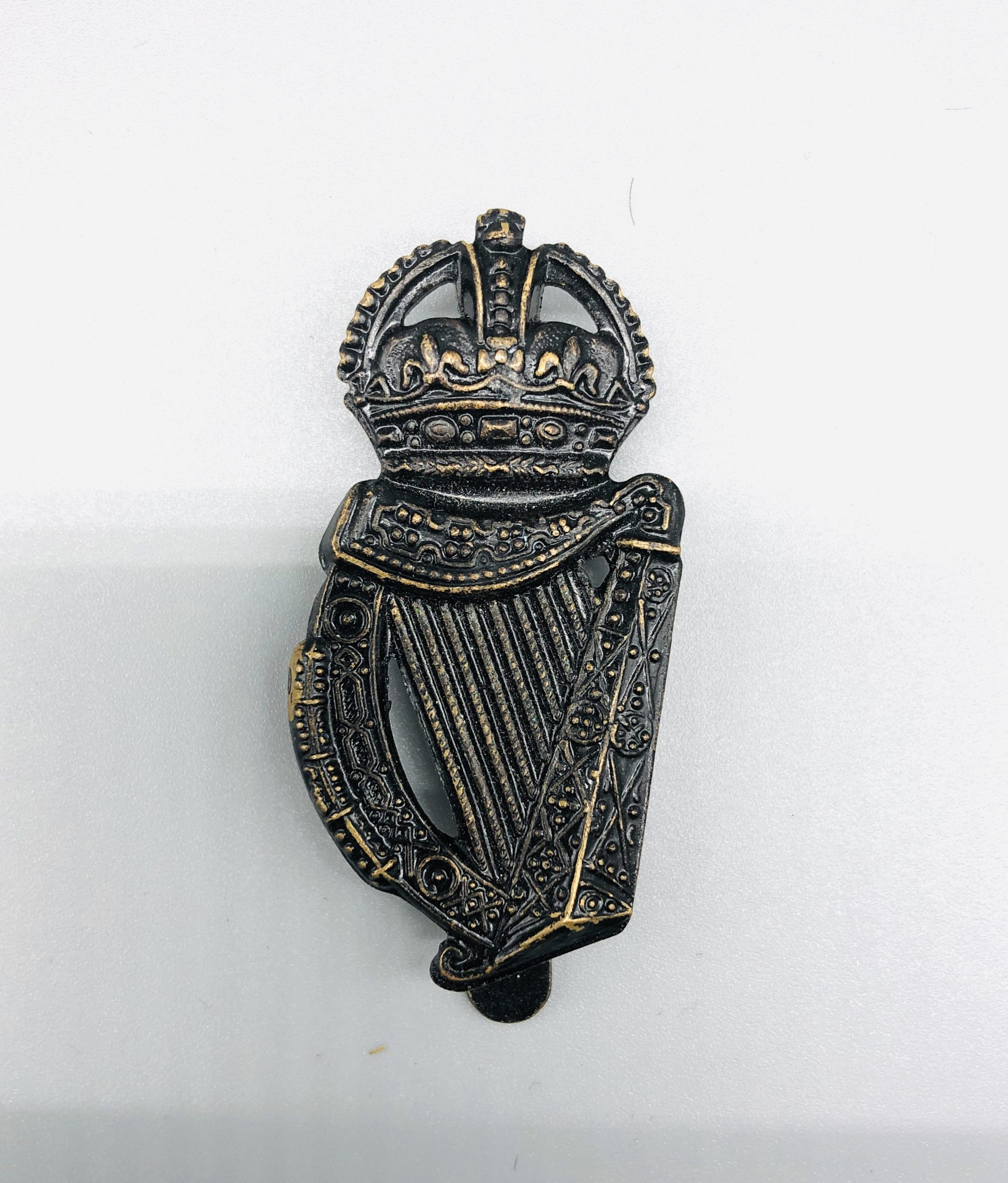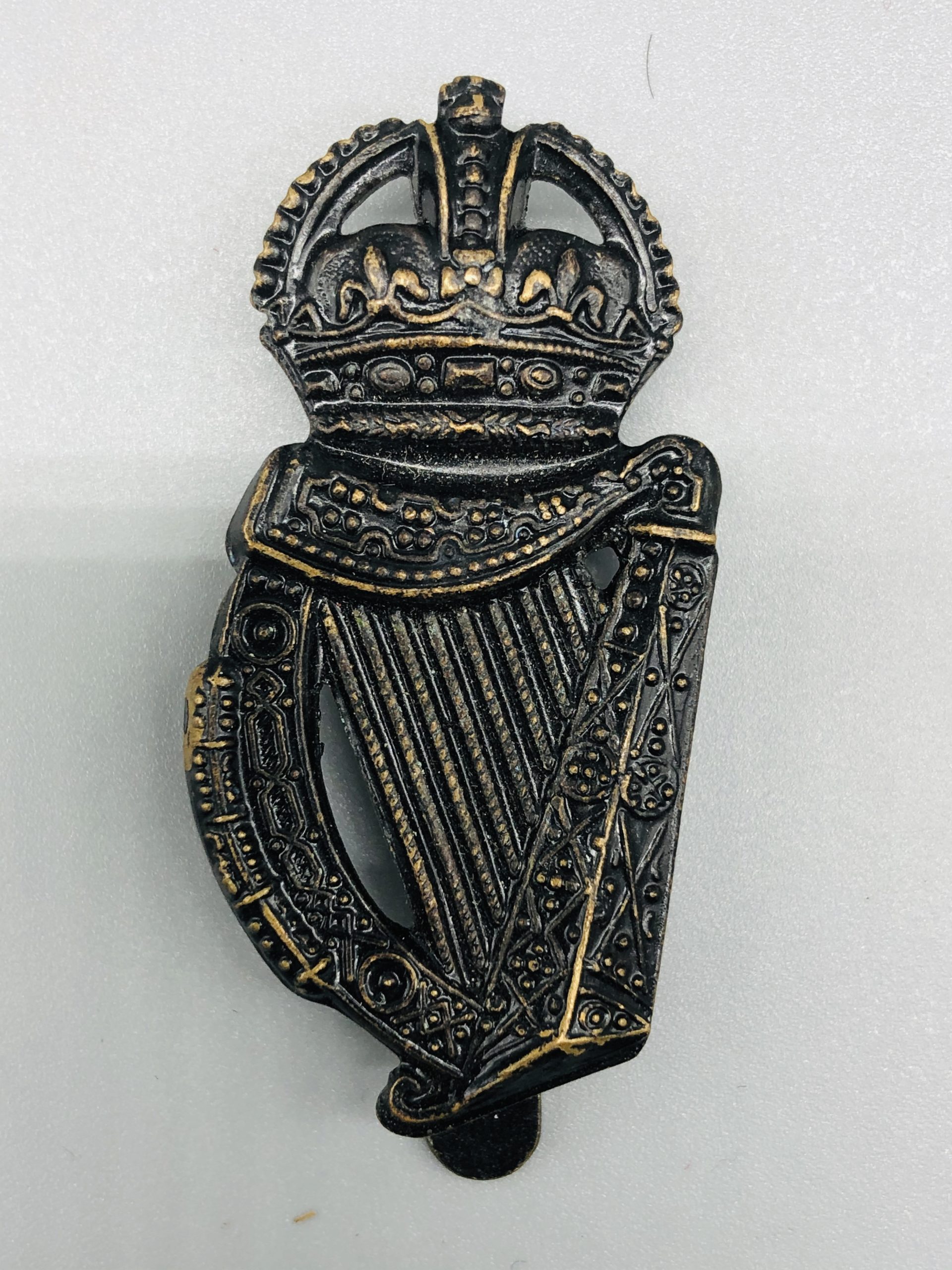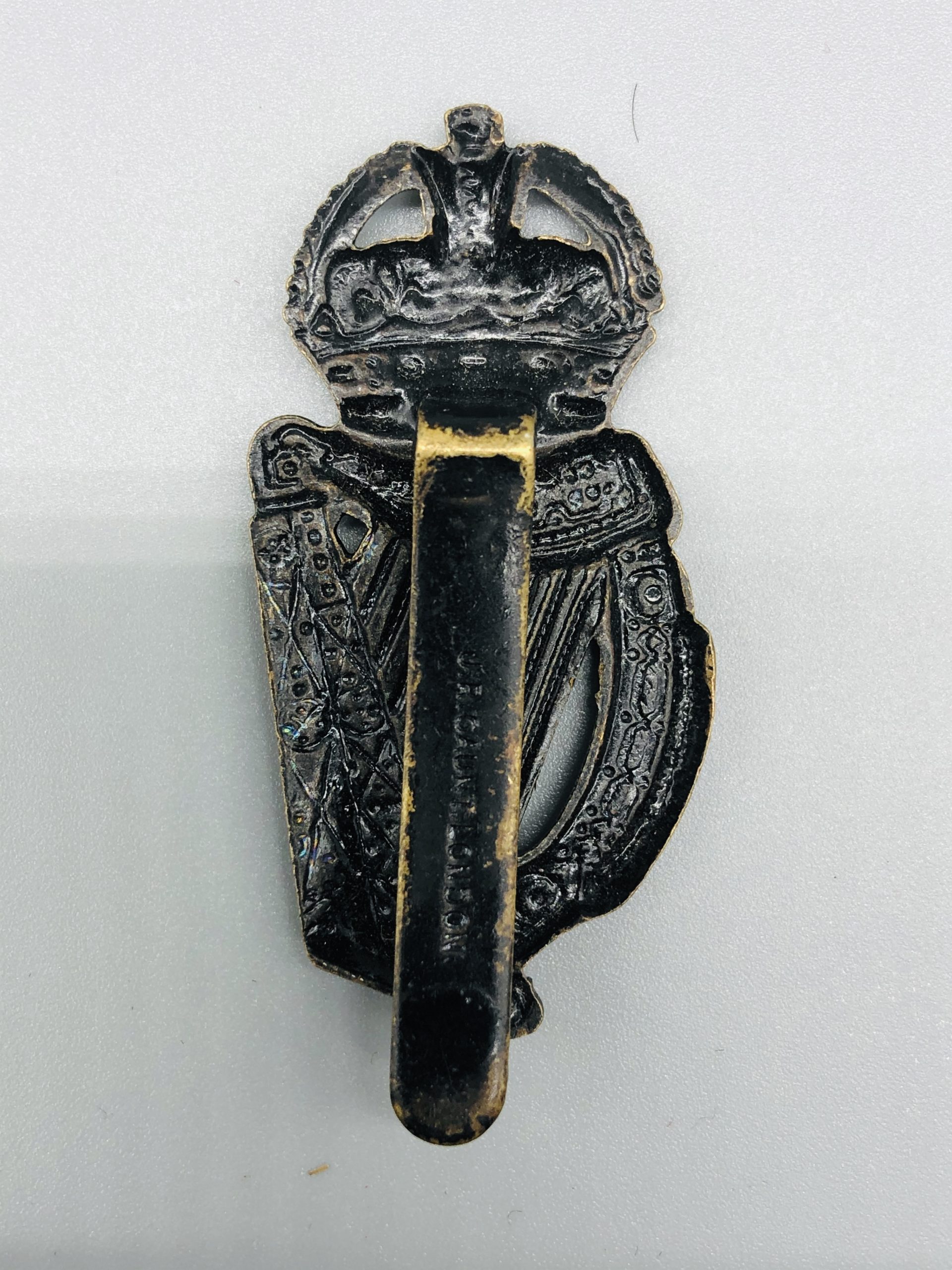Description
London Irish Rifles Cap Badge, 18th County of London Bn,
The regimental cap badge of the London Irish Regiment simply depicts an Irish Harp, surmounted by Imperial Kings Crown.
Brief History
The London Irish Rifles was a volunteer rifle regiment of the British Army with a distinguished history, and now forms ‘HQ Company’ (London Irish Rifles) of the London Regiment and is part of the Army Reserve.
The London Irish Rifles was originally formed in 1859 during the Victorian Volunteer Movement and named 28th Middlesex (London Irish) Rifle Volunteer Corps. During the Second Boer War, the battalion sent eight officers and 208 private soldiers for active service. Captain EG Concannon won the Distinguished Service Order (DSO). In recognition of their service, the London Irish was granted their first battle honour, “South Africa, 1900-1902”.
In 1908, the London Irish was transferred to the Territorial Force and renamed the 18th (County of London) Battalion, the London Regiment (London Irish Rifles).
World War One
The 1st battalion was mobilised in August 1914, at the start of the First World War at the Duke of York’s Headquarters. It landed at Le Havre as part of the 5th London Brigade in the 2nd London Division. The 2nd battalion landed in France in June 1916 in the 180th Brigade in the 60th (2/2nd London) Division. The 2nd battalion served on the Salonika front from December 1916 to June 1917 and then join the Egyptian Expeditionary Force for the advance to Jericho.
At the Battle of Loos, the 1st Battalion LIR particularly distinguished itself. While storming across No-Man’s Land to capture the enemy trenches, Rifleman Frank Edwards, the Captain of the football team, kicked a football along in front of the troops as they approached the German lines. Some 1,016 London Irishmen were killed during the conflict.




